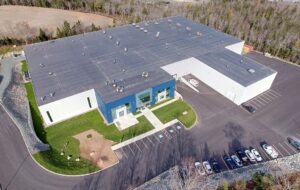John Kim is managing partner of Amasia, a multi-family office and cross-border venture capital firm based in Singapore. Before founding Amasia, he managed trading and investment strategies across commodities, public and private equity, fixed income and derivatives for Mercuria Energy Group, Goldman Sachs, and Korean National Investments.
Recently, in his role at Amasia and managing the family office of his wife’s family, Kim has started researching the agritech sector for investments.
Here he tells me about the journey so far and his particular method of sourcing agritech investments.
When did you start looking at food and agriculture as an area of investment interest?
I used to be a commodities trader and ran the agriculture trading book for Goldman Sachs in Asia, so it’s a space I’m familiar with, although it never went further than commodities.
My wife’s family business, for which I’m now starting to run an investment portfolio, started out life as a food processing business. It’s since diversified into pharmaceuticals, retail, and real estate, but agriculture is certainly still in their DNA.

But it’s my day job managing Amasia, a cross-border venture capital firm, that’s really pushed me further into the sector. The firm is a quasi-multi family office as all the LPs are families from Asia, including my wife’s family.
I believe it makes sense to look for investments in the industries the LPs are involved in because we might discover a technology that will help them improve yields or even disrupt them; so look for both strategic value and an investment return, much like a corporate VC. And when we mapped out our LP families, we realized that many had significant agriculture holdings.
Have you made any investments yet?
We are approaching the sector with a slightly different model to a traditional venture capital firm. When I was first exposed to the venture capital industry, one thing struck me about the process of firms investing in startups that I wasn’t used to. In my previous finance and banking roles, the guy with the money gets pitched, but in venture capital, it’s often the VCs pitching the startups to take their money. For startups, it’s all about getting the right people around the table to turn the business into a unicorn [worth $1 billion].
As an investor, you need to be crystal clear what value you bring to the table to make sure you’re getting into top tier companies. The barriers to entry for startups are much lower, though, and there’s a much wider band of quality.
So, as we thought about how to get to the top tier of startups and ensure we’re value-adding investors, we realized our strength was our LP base and our ability to help with cross-border expansion from the US to Asia.
But even then, after lots of research and getting to the term sheet stage with a couple of companies, we decided to pursue a different model and incubate companies before investing in them first.
What does this incubation involve?
I think it’s safe to say that some investors have been a bit disappointed with the returns and promise for how technology can impact agriculture in the short to medium term, bar, of course, the few big exits like Climate Corporation to Monsanto in 2013. That will change, but a way of de-risking it for us now is to bring the startups over to Asia to meet our agriculture families and see what partnerships we can arrange between them before we make any investment. It could be that they give us a percentage of their revenues in exchange for us distributing their products, for example. This is a nice way to “date” each other before investing.
We have engaged one agritech company with this approach so far. It’s an aerial imaging company. We brought them over to meet the families, and that gave us an order of magnitude more comfort in working with them; it was much more visceral than calling them. Here we have folks that are on our side, with a real business interest in this startup, and when you see their excitement, it’s very comforting. We haven’t invested yet as the company hasn’t had an open round, but it’s now quite likely for a future round.
Which areas of agritech are you looking at in particular?
Broadly speaking, you can split agritech into two main categories; biosciences and information-driven technologies. I think there are some great opportunities in biosciences, but in general VC returns in IT have outperformed those in biotech and clean tech, because in IT you have exponential curves where the power of computing is doubling every 18 months or so, and you can scale much faster if you’re leveraging on that technology. There are some interesting areas of integration between biotech and IT, but in the broad sense, it’s harder to find returns there.
Why did you go with an imaging company for your first collaboration and possible investment?
To optimize the farm and increase profit over the long term, you need to know what’s going on in your fields and there are a few ways to do that: put sensors into the soil or on the plant, or take imaging from above. All of these have their own place and agribusinesses can use them together. The ground sensors can take a very exact reading from a very specific point but can’t necessarily get an overall view of the field. A lot can happen in between sensors and plants, whereas imaging provides a broader view. The combination of the two things would be very powerful, so we might build a portfolio of complementary technologies.
We have a few other agritech companies in the pipeline at the moment and expect some more activity this year, but we haven’t decided anything yet.




